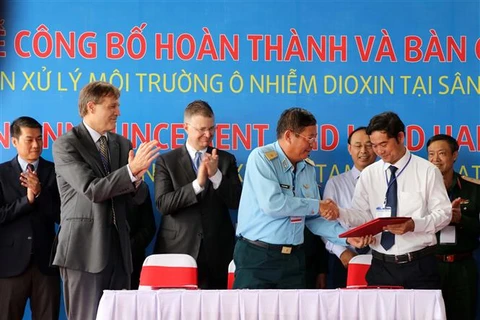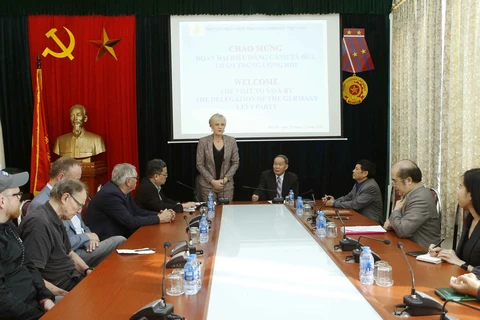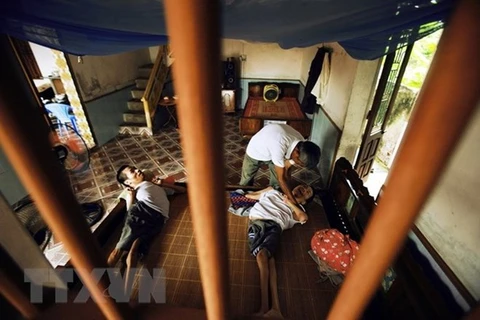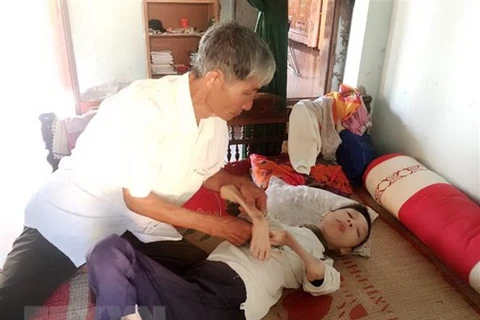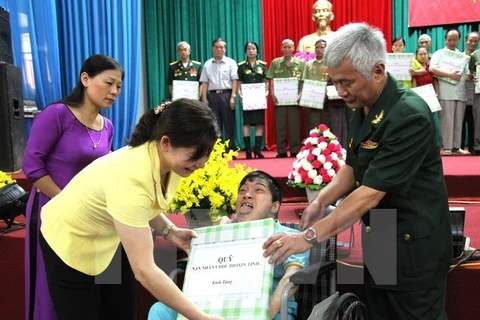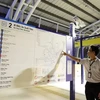 Participants in the conference on the settlement of Agent Orange/dioxin consequences in Vietnam on December 14 (Photo: VNA)
Participants in the conference on the settlement of Agent Orange/dioxin consequences in Vietnam on December 14 (Photo: VNA) Hanoi (VNA) – An international conference was held in Hanoi on December 14 to discuss the settlement of Agent Orange (AO)/dioxin consequences which still linger in people’s bodies and the environment across Vietnam.
Deputy Minister of Defence Sen. Lt. Gen. Nguyen Chi Vinh said that although the war ended over 40 years ago, the consequences of toxic chemicals, and unexploded bombs and mines leftover from the war still substantially influence the safety and health of Vietnamese people, the environment, and national socio-economic development.
It is not only dioxin, but also other toxic chemicals used by different countries in the past that have left serious consequences, posing challenges to the realisation of the Millennium Development Goals, as well as environmental protection and the improvement of people’s health, he noted.
[Video: Dioxin detoxification project in Da Nang airport completed]
Col. Than Thanh Cong, chief of the national steering committee office for addressing post-war unexploded ordnances and toxic chemicals in Vietnam, said that between 1961 and 1971, about 80 million litres of herbicide were sprayed onto 2.63 million ha of land in southern Vietnam. Roughly 61 percent of the total herbicide was AO, containing 366kg of dioxin. More than 2 million ha of forest land was affected to varying degrees.
Aside from these areas, the military bases the US army used to store, mix, and deliver the herbicide and clean its aircraft before and after spraying were also seriously contaminated with AO/dioxin.
Cong said that over the years, the Vietnamese Government has worked alongside domestic and foreign organisations to address the consequences of AO/dioxin contamination. Notably, about 150,000 cu.m of dioxin-contaminated soil in three hotspots – namely Da Nang airport in Da Nang city, Bien Hoa airport in Dong Nai province, and Phu Cat airport in Binh Dinh province – has been safely isolated.
Regarding human contamination, authorities have carried out many activities to support AO/dioxin victims and their children, such as by providing financial aid and medical examination and treatment, building and repairing houses, and presenting scholarships, the official added.
At the conference, participants, including foreign experts, focused on AO/dioxin’s impact on the environment and human health, as well as ways to address the problem. –VNA
VNA
